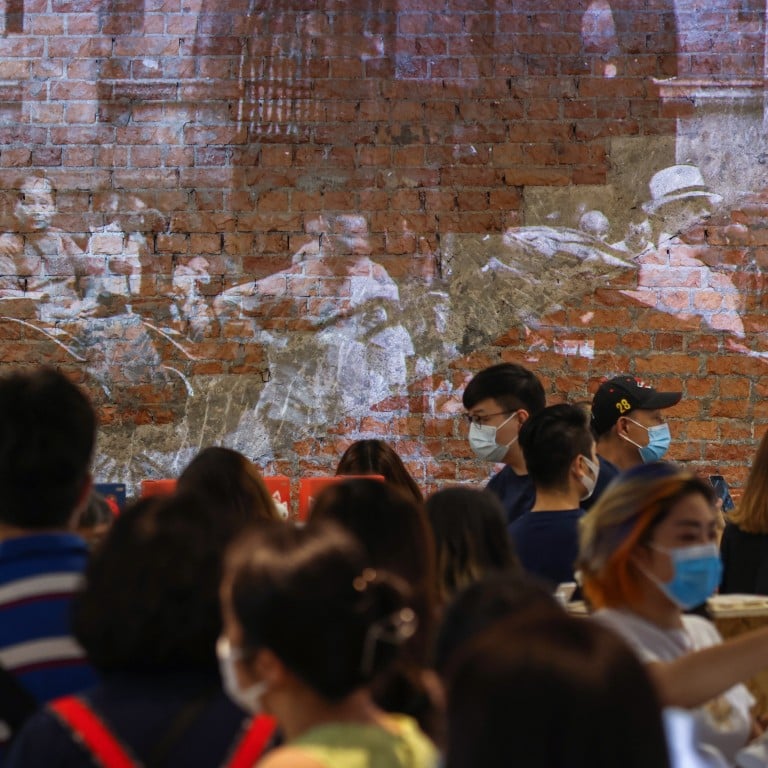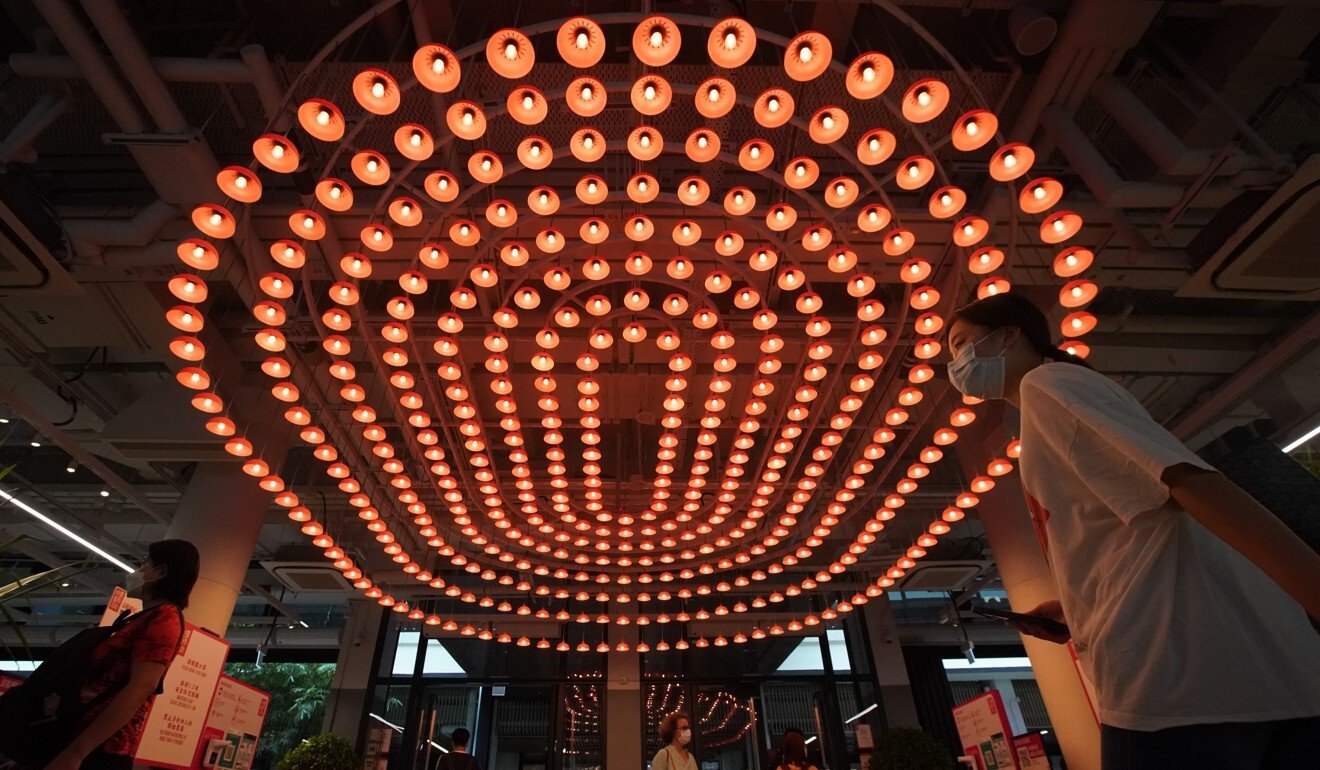
Hong Kong history buffs upset revamped Central Market heritage galleries leave out WWII ration queues, air raids, bombing
- Accounts of tragedy, queues of hungry people should be part of landmark’s story, experts say
- Some visitors to revamped market admit being clueless about events during Japanese invasion
Hong Kong’s 82-year-old Central Market reopened last month as the city’s latest revitalised heritage spot, but history buffs are disappointed that too little has been done to reflect events there during World War II.
Although there are galleries on the history of the three-storey building, the exhibits focus mainly on what happened before and after the Japanese occupation of the city from 1941 to 1945.
The only exhibits related to that period are an original Chinese signboard showing the market’s name after it was renamed during the occupation, and a photograph of a stall certificate issued by the Japanese in 1944.
Veterans share stories of Central Market bustle and naked workers
Visitors will not know that the market was used as one of the city’s biggest wartime communal kitchens for the poor, or that it was bombed when the Japanese invaded in December 1941.
None of this is reflected on the Central Market website, and recent public talks at the landmark on Des Voeux Road Central have featured former stallholders describing what it was like as a bustling wet market before it closed in 2003.
Hong Kong war historian and author Tony Banham called it “wasteful” to preserve old buildings without keeping their history as well.
“It’s like having a statue without a name. History gives everything meaning and depth and simply adds to a place’s value in the community,” said Banham, the author of several books on Hong Kong’s World War II experiences.

Banham said a number of books published during the war recorded accounts of that chapter of history, with details about the market.
Associate Professor Kwong Chi-man, of Baptist University’s history department, said it was “strange” that the wartime information about the market had been left out.
“The market was built in 1939, Hong Kong people are educated enough to understand the meaning of the war years,” he said.
The market reopened last month with more than 100 units for start-up brands, boutiques and speciality restaurants, and public spaces.
The Urban Renewal Authority was in charge of conserving the building and Chinachem Group won a contract to run the market for 10 years.

When asked about the missing wartime information in their history galleries, a Chinachem spokesperson said the current exhibits were “sufficient and appropriate” to offer visitors a glimpse of the market’s past.
The spokesperson did not answer queries on plans to add information on the wartime years.
Two books with accounts of what happened at the market during the war are Jesuits Under Fire in the Siege of Hong Kong, 1941, by Irish Catholic priest Thomas Francis Ryan, and Hong Kong Aftermath, written in 1943 by American Wenzell Brown, who taught at Lingnan University.
Ryan, who distributed rice at the Central Market, described how thousands of people queued there daily from early morning for rations, with the long lines snaking around all four sides of the market.
During air raids, they were sometimes allowed to wait inside, as the market was built with reinforced concrete and considered strong enough to provide protection from bombs.
Central Market reopening as heritage centre after HK$500 million makeover
Each person either received a bowl of rice and soybeans or could buy small amounts of raw rice at a lower price.
Brown described disorderly situations when locals tugged and pushed one another to snatch the rice they wanted to buy. Local university students had to help the Westerners explain instructions in Cantonese for the queues to become orderly.
Ryan wrote that the communal kitchen in the market’s central space was manned by professors, students, businessmen and other professionals who cooked and distributed large quantities of rice.
“The only danger was if a bomb should fall in the central open space where the rice boilers were situated. But that seemed only a chance in a million,” Ryan noted.

But the worst did happen in mid-December, 1941. “There was an appalling crash and a thunderous roar and a shivering of glass, and in an instant, everyone was flat on the ground,” Ryan wrote.
He survived the bombing but described mangled bodies strewn about, with blood and dust everywhere after the explosion. Two cooks he had been speaking with only minutes before were among those who perished.
Brown wrote that he saw the bodies of women and children crushed beneath the rubble.
“They had waited patiently in line for rice and beans, and death had been delivered to them,” he wrote.
Baptist University’s Kwong said there was no shortage of information about the wartime years to improve the heritage gallery at the Central Market.

Factual accounts of the bombing were recorded in several archives, including the police war diaries and colonial office papers.
Legal assistant Michael Wong Tsz-kin, 27, who visited the revamped Central Market on Tuesday, said he did not know the wartime stories of the place.
“They should share what happened to the market during that period and let us learn more about how difficult the people’s lives were at that time,” he said.
Another visitor, Nancy Li, 35, felt the same way when told what happened at the market during the war.
“I didn’t even know about this before,” she said. “It will be good to know how people survived and whether the market did anything to support them.”

